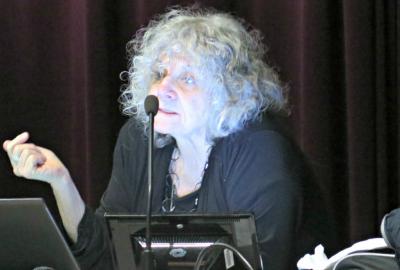 Professor Ada Yonath is not one to back away from a challenge.
Professor Ada Yonath is not one to back away from a challenge.
So on July 14, nursing recently broken ribs, the Israeli crystallographer rushed straight from the international arrivals gate at Melbourne Airport to a room full of eager PhD students, whom she inspired and entertained for almost two hours with tales of her feats and failures.
It is this trademark grit and determination that saw Prof Yonath dedicate “20 years, minus two weeks” to mapping the structure of the ribosome, which consists of hundreds of thousands of atoms, using x-ray crystallography – a feat she accomplished (with her colleagues) in 2000 and which saw her win the Nobel Prize for Chemistry in 2009.
Prof Yonath, Director of the Helen and Milton A. Kimmelman Center for Biomolecular Structure and Assembly at the Weizmann Institute of Science, said she believed crystallising ribosomes to reveal their structure and function was not the “impossible project” it was thought to be and spent decades chasing this dream, despite being met with ridicule. She said it was a seemingly unrelated article about the hibernation of polar bears that sparked a breakthrough and led her to develop the process of cryo-bio-crystallography, which involves exposing the crystal to extremely low temperatures to minimise disintegration.
Introducing her, EMBL Australia Group Leader Associate Professor Chen Davidovich – who discovered new sites on ribosomes whilst a student in Prof Yonath’s laboratory – said the much-lauded scientist developed new technologies, pushed boundaries and redefined what was possible, making significant contributions to the fields of x-ray crystallography and structural biology.
Prof Yonath’s research has led not only to a detailed understanding of the actions of the most common antibiotics, but could aid the development of more effective antibacterial drugs and new weapons in the fight against antibiotic resistant bacteria, or ‘superbugs’ – one of modern medicine’s greatest challenges.